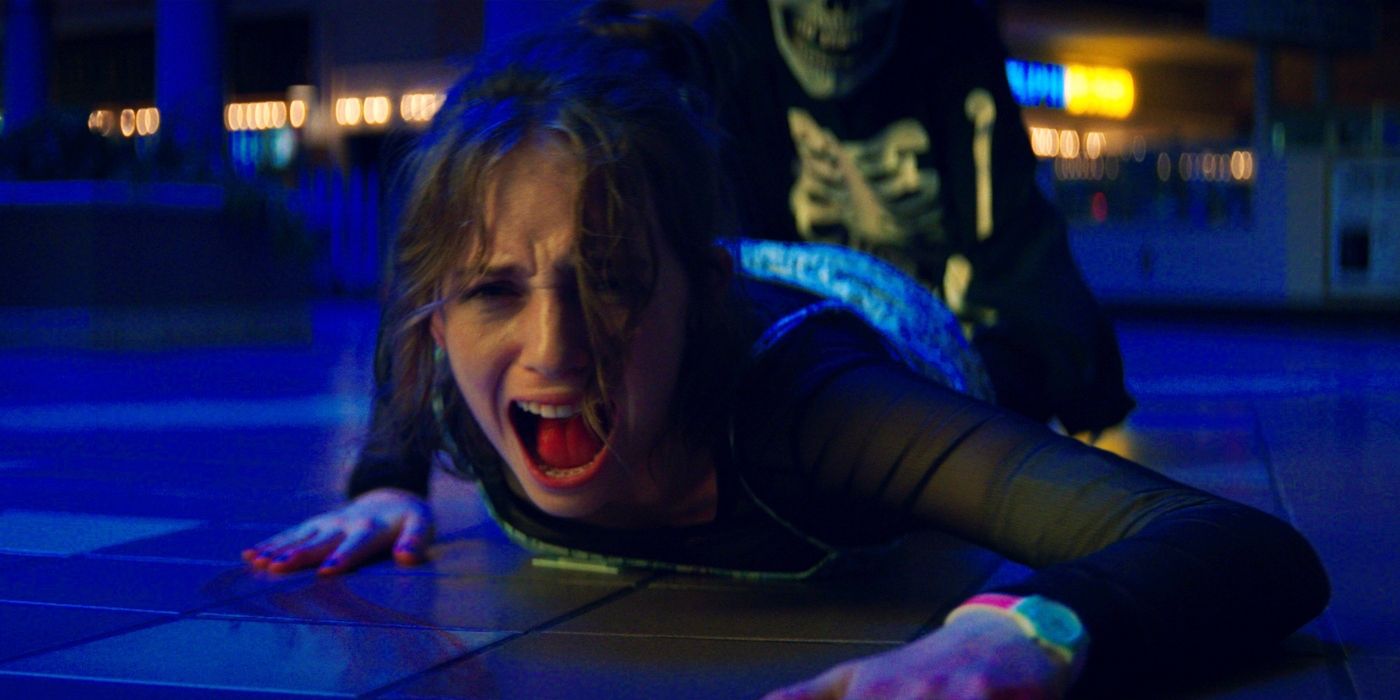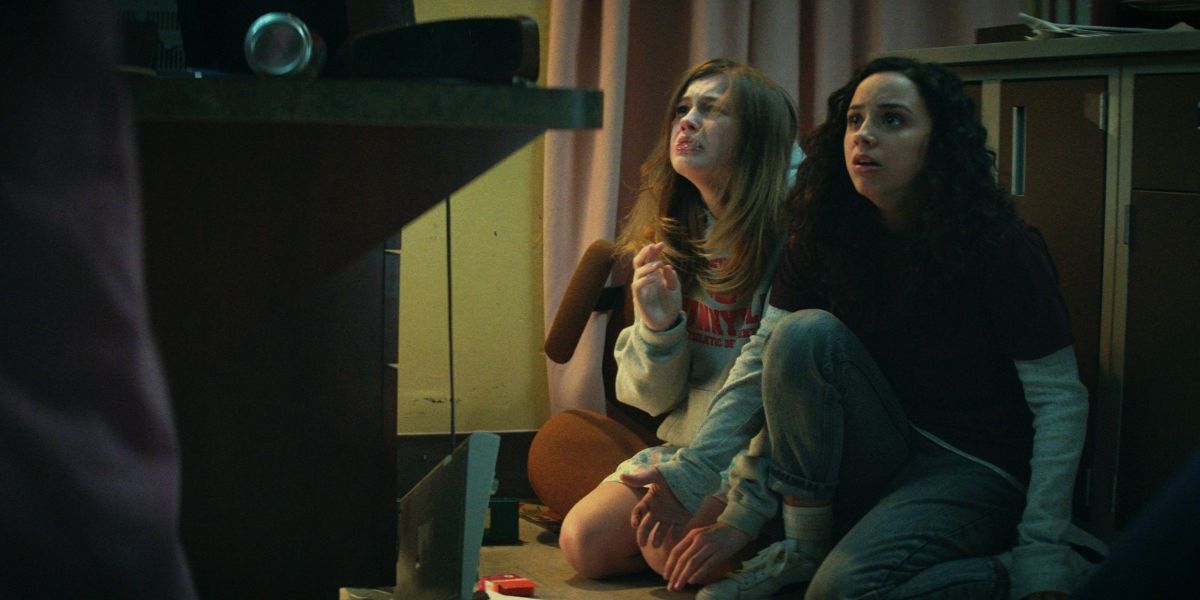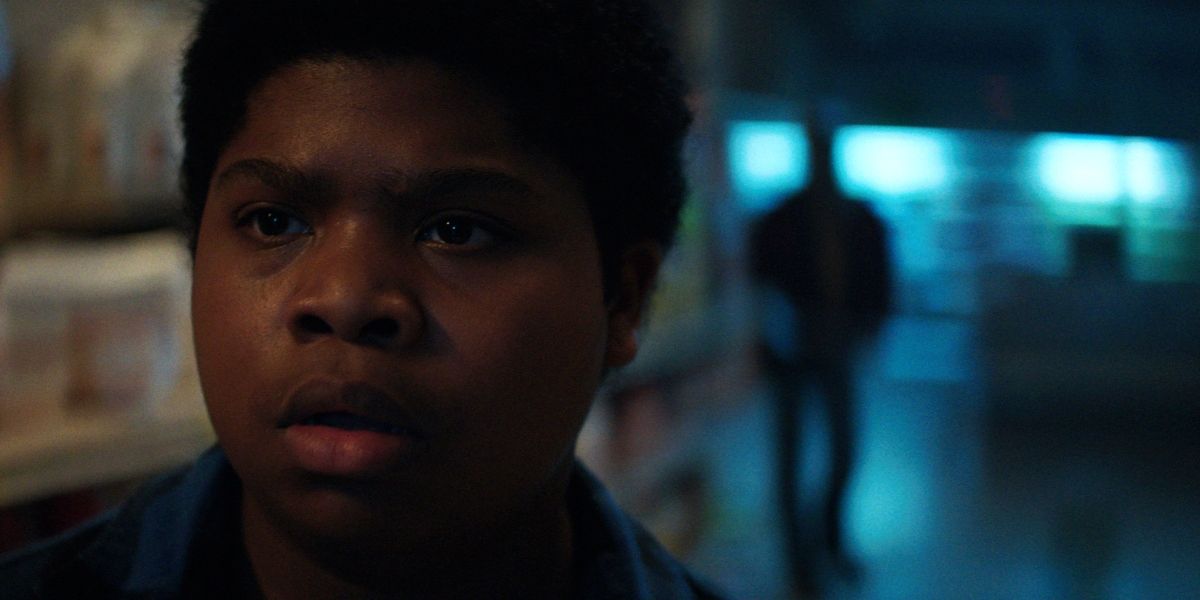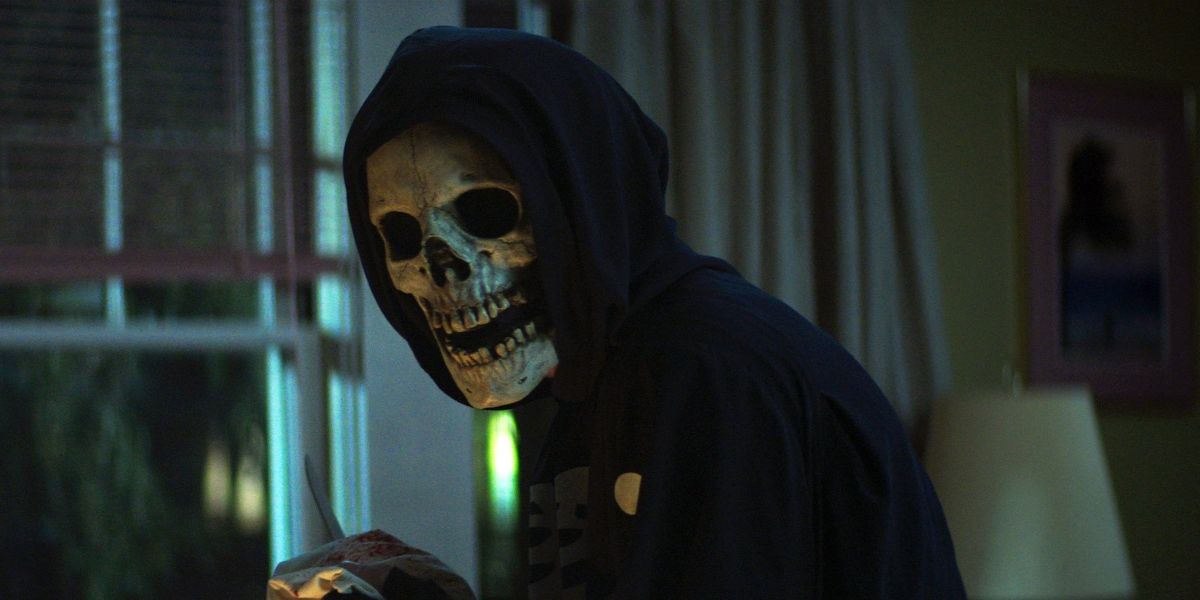For many horror fans of a certain generation, R.L. Stine is the gateway drug. Discovering Goosebumps in middle school and Fear Street a little later was the potent but still relatively safe hit that led to the hard-R stuff down the road. Stine's oeuvre has become such an established, easily recognizable pop culture touchstone that I genuinely wonder if people will be surprised by Fear Street Part One: 1994, which feels less like a gentle gateway and more like getting dropkicked directly into the deep end. Director Leigh Janiak and her co-writer Phil Graziadei have crafted one gnarly horror flick, heavy on the gore, guts, and teenage hormones in a way that calls to mind the entire slasher spectrum, from the genre's holiday-themed heyday in the late-70s and 80s, to the 90s horrors that all got sucked into Scream's orbit. (Fear Street Part One unsurprisingly owes its biggest debt, tonally and visually, to Wes Craven's iconic 1996 film.) It's also a wildly uneven film, filled with hard-left tonal shifts and needle-drops on-the-nose enough to draw blood, but even its occasional awkwardness lends itself to the schlocky B-movie vibe it's reaching for. By the end, it's clear Janiak has a firm handle on what made slashers so successful at their peak—sloppiness and all—as well as what a razor-sharp, modern, and unapologetically queer version of the genre looks like at its best in 2021.
The first chapter of a three-part story, Fear Street Part One: 1994 is a supernatural tale of two cities. Sunnyside, a wealthy suburban oasis that has never experienced a single violent crime, sits next to Shadyside, super-subtly nicknamed "Killer Capital USA" because of the fact a new deranged murderer pops up every few years to add to the town's body count. In the aftermath of the latest spree—a madman in a skull mask who carves up a shopping mall after hours—Shadyside high-schooler Deena (Kiana Madeira), her younger brother Josh (Benjamin Flores Jr.), and drug-dealing friends Simon (Fred Hechinger) and Kate (Julia Rehwald) uncover a 17th-century curse that could be the cause of the town's horrific history. A single night takes a turn for the terrifying when that curse sets its sights on Sam (Olivia Scott Welch), Deena's ex-girlfriend who left her for the safer city limits of Sunnyside.
The thing about Fear Street Part One is that if you want blood, you got it. The unavoidably Stranger Things-esque vibe of Fear Street's marketing campaign is hiding a wicked little slasher that revels in its buckets of blood, including a late-in-the-movie kill that's about as graphic as I've seen on screen in a good long while. (Just keep the two words "deli meat" in mind.) Refreshingly, though, there's a practical hand-made quality to the movie's VFX, not just in its various kills, but in the monstrous entities ripped from the pages of Stine's books that eventually pop up in the plot. You get a distinct personality from each beastie; no surprise, considering Fear Street's makeup FX department was headed up by Oscar-winner Christopher Allen Nelson, who, among many other things, was also integral to bringing Michael Myers back to gritty, grimy life in Halloween (2018).
Worry not, there are actual flesh-and-blood human beings in this film as well, and Fear Street assembled an endearing cast of young leads, something that can so easily sink your high-school set horror film. The movie doesn't work at all if Madeira and Welch aren't so strong on opposite ends of the love story at its core, almost soap opera-esque in its intensity. But man, that tone is effective, and it's effective for the same reason high school horror is effective; at that age, innocent crushes, first loves, casual breakups, sex, self-identity, and hunting knife stabbings all take on equal dramatic importance. Madeira and Welch play it big but believable.
Fear Street Part One takes a while to find its groove, though, having to first traverse an opening act that doubles as an all-out assault of 1990s needle drops, in case you missed the "1994" at the end of the title. I will never say boo to a well-deployed 90s jam, but there's a clunkiness here, two dissonant songs occasionally just bleeding into each other, as if to say "well, we already paid for both." By the time a character throws on a pair of headphones playing Radiohead's "Creep" to signify they are, in fact, a bit of a loner, you start to worry this film has no handle on its own tone. It certainly doesn't help that the film struggles to get off the ground under the weight of its own expository demands; Part One is unfortunately saddled with introducing an ensemble, establishing their individual relationships, explaining the history of two towns dating back centuries, and planting the seeds for two more follow-up films set 300 years apart. It's a lot, and because this film is operating at heightened B-movie levels, the first 20 or so minutes feel at odds with its own need to slow down and explain. I'd be more comfortable calling this portion campy if it felt intentional, instead of like a longer first act getting chopped down to size.
Fortunately, Fear Street Part One rockets through its roughest patches and then just rips, leaning into its weirdest tendencies and turning into a bloody, single-night horror story worthy of the many films it references. The biggest bummer about Fear Street debuting on Netflix is that it feels like something meant to be seen at a midnight drive-in. For any former Goosebumps faithful that grew up to be diehard horror-heads, you'll know that is a high compliment.
RATING: B+
Fear Street Part One: 1994 debuts on Netflix on July 2, with Part 2: 1977 following on July 9 and Part Three: 1666 on July 16.




